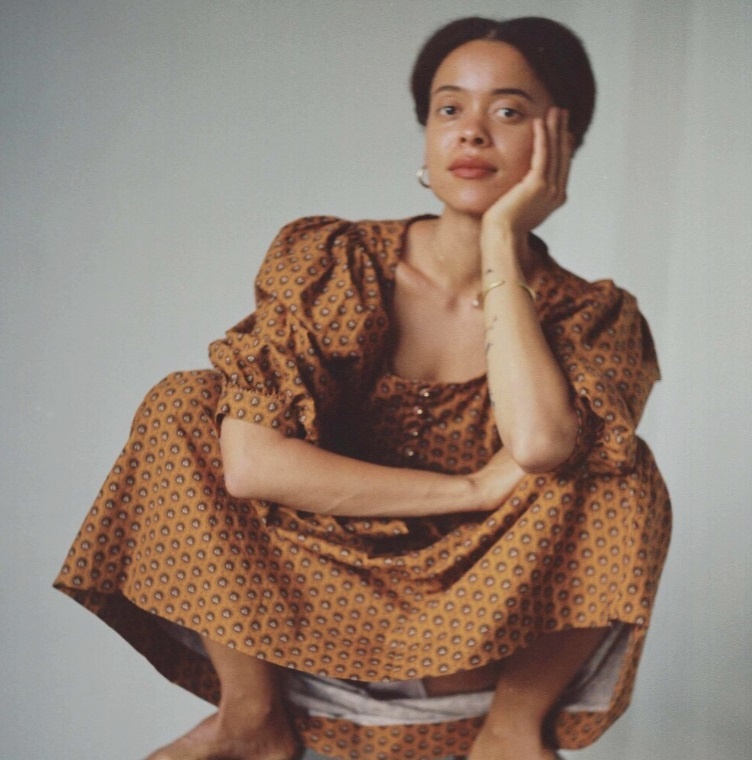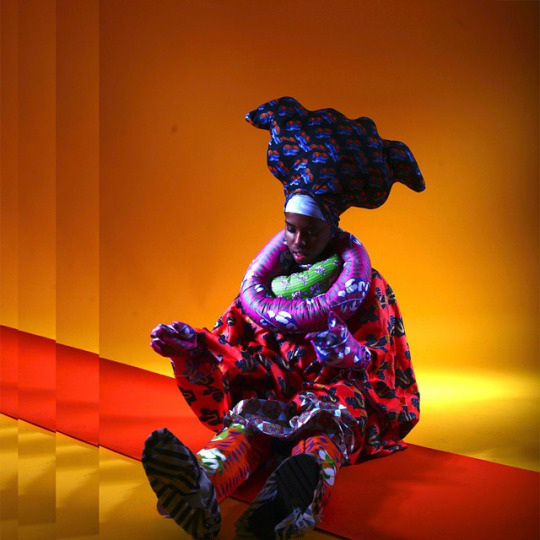I find colour and religion to be ethereal processes: they are transcendent, they do something to the soul, and they come through me.
Born in Mozambique, Cassi Namoda’s upbringing have since made the whole world her playground. Cassi was raised in many different countries ranging from Kenya, USA, Benin, to Uganda. In a nostalgic trip down memory lane, Cassi explains how certain stories and images have stuck with her and made it onto the canvas in an exquisite marriage between colours, hues, and materials, depending on her current mood and inspiration. While the process that produced the artworks she will be showing at CFHILL began in 2019, it naturally came full circle in early 2020. These works, and their meaning, couldn’t have arrived at a more suitable time, as they seem tailored to the ongoing pandemic. In conversation with Cassi, her humble personality and magical spark come across in everything from the references she makes to her beloved Africa to her desire to be there for others as much as she can, all of which are expressed repeatedly throughout the many layers of our virtual conversation.
What inspired you to create these pieces?
— I had come back from Mallorca, Spain, and I received some really bad news from my family in Northern Mozambique, and I felt the need to make this work. Then, I finally completed it in 2020, which sort of signified an idea of how to resolve or conclude the painting. Sometimes, the best paintings don’t have to be rushed, or be particularly immediate; they can sort of evolve over time. Perhaps, that way, you can gain a better understanding of the situation or the scenario. I also think that painting can offer cathartic relief and help you process things.
How has your journey as an artist evolved, and where did it start?
— A lot of stems from memories and visceral experiences from childhood. I think that all children, in their formative years, possess more curiosity, playfulness, and naivety when it comes to creating. I always had more of an inclination to pursue that, so it’s something that stuck with me throughout my schooling years. I’m definitely a person with a great variety of interests, alternating between cinema, photography, and fashion. I think that all comes through in my work, and I also always consider anthropological and other kinds of historical research. I feel like the medium that fits me best in terms of what I want to portray is the one that I encounter in all of these different worlds: I sometimes feel that painting is the purest form of art.
Your use of colour is very distinctive. Could you tell us how you go about choosing colours for your pieces?
— When I make a body of work, I keep the palette consistent. I find colour and religion to be ethereal processes: they are transcendent, they do something to the soul, and they come through me. When I made The Day a Monkey is Destined to Die at Francois Ghebaly Gallery, the colours were much more intense–richer blues, darker oranges, a lot more contrast. And when I made the Pippy Houldsworth Gallery show, it was much more of an ecstatic energy, and I wanted it to be more about romance and pause. The tone became lighter. That’s really just an emotional drive, and a matter of being present in one’s reality. The works I made for the Pippy show were more inspired by my early morning walks. I took those walks every morning with my dog, and I would look at the bay and see the soft yellows, the pink, and the sand. There was a sensitivity to all that. So, I think that for me, colour is more about a place and a time, and what I’m open to receiving then and there. It’s less about Mozambique–and yes, the Pippy show was about daily life in Mozambique, but those colours were influenced by my experiences in the present.
*The views of the above article are those of the author and do not necessarily reflect the views of Africa Speaks 4 Africa or its editorial team.




